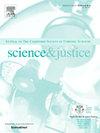There is limited data available on the subject of indirect transfer of non-visible body fluids, particularly semen, and often forensic science practitioner experience alone must be used to guide expectations. It can be difficult to assess the likelihood of proposed transfer scenarios without knowledge of how different variables can affect a transfer. The following work carried out by the Association of Forensic Service Providers UK and Ireland Body Fluid Forum explores how the features of transferred semen change with differences in the primary and secondary surface (porous and non– porous), different contact types (passive, pressure and pressure+) and with wet and dry primary stains. It was concluded that the primary surface type and whether the stain was wet or dry when contact occurred had the most significant effect on the transfer of semen, with wet transfers and transfers from the tested non-porous surface producing significantly more, and larger, visible stains under white light, stains with stronger fluorescence as viewed using Crime-lite® ML2, stains with stronger and faster acid phosphatase reactions and greater numbers of spermatozoa viewed using high power microscopy, compared to dry transfers and transfers from the tested porous surface. Pressure with movement transfers resulted in significantly more visible stains under white light and greater numbers of spermatozoa viewed using high power microscopy compared to passive transfers, however this only occurred when transfers were from a porous primary surface. The secondary surface type was not found to have a significant effect on the numbers of spermatozoa viewed using high power microscopy.


